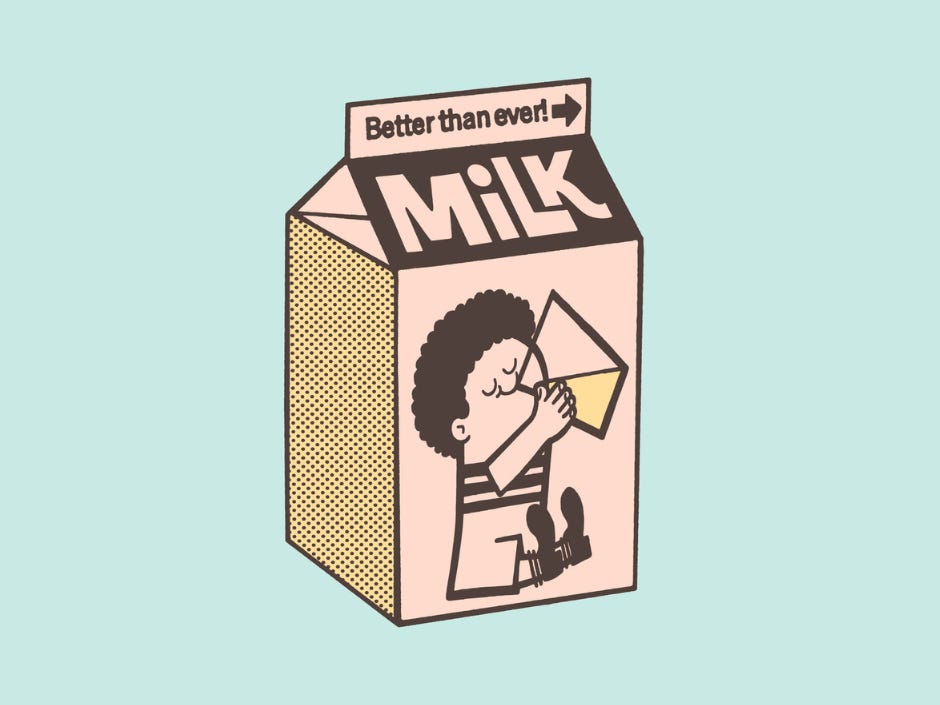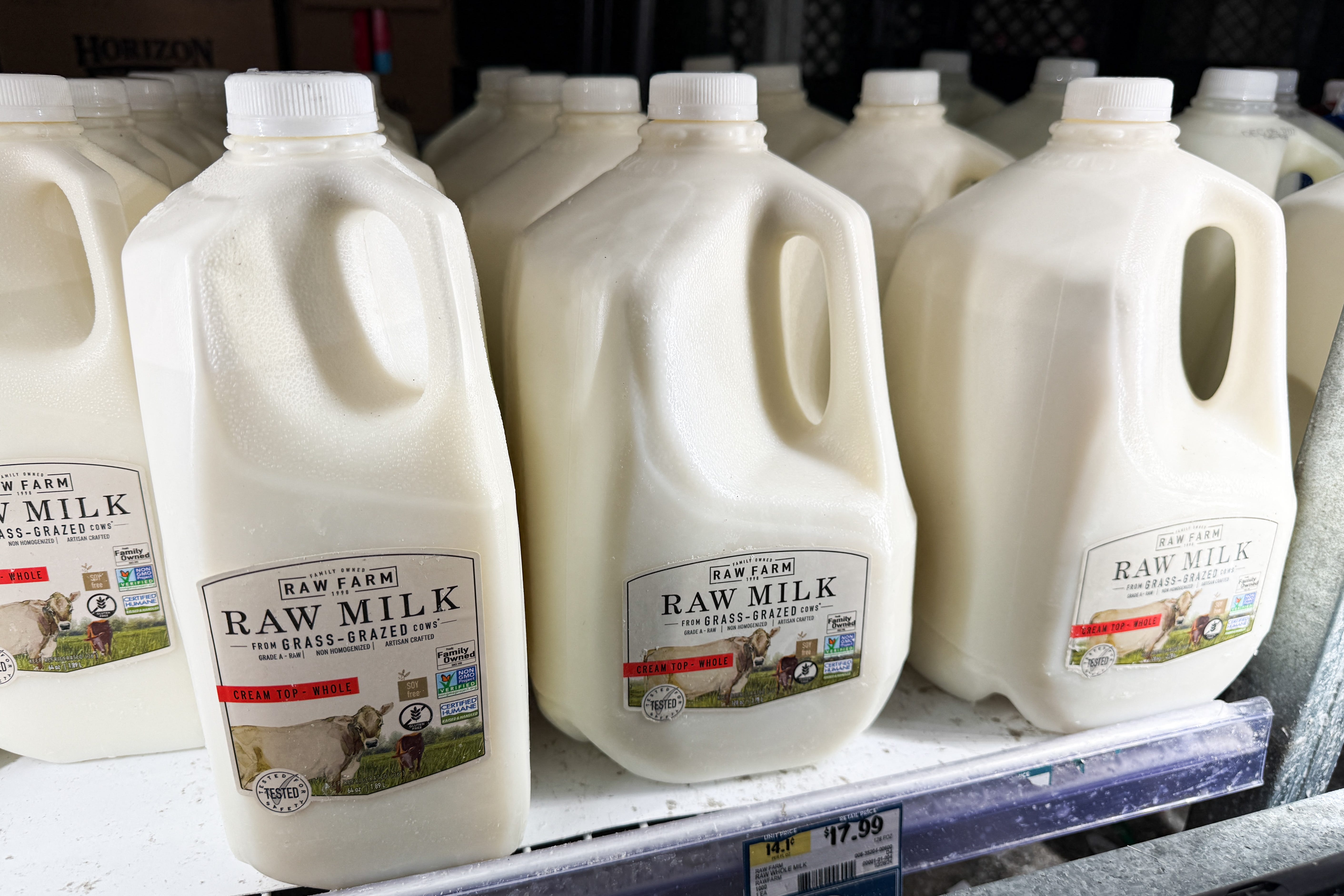
Getty Images
Want to snack on something that’s high in protein, gut-friendly, minimally processed, and tastes good? Hit the dairy aisle.
After years of being outshone and relegated to second best by shiny, new plant-based alternatives like oat milk and cashew cream, dairy is not only in demand, it’s having a glow-up.
Products like mint chocolate cookie probiotic ice cream and pistachio-flavored kefir — some of which come wrapped in whimsical, retro-style packaging — are hitting the market as dairy finds itself at the center of the Venn diagram of health, food, and cultural trends.
“I really have not seen this type of dairy innovation in past years,” Jessica Rubino of New Hope Network, an organic-focused consultancy firm that tracks US food and drink industry trends, told Business Insider.
According to the organization’s insights, the organic dairy sector grew by 9.8% in 2024, up from 5.6% the previous year — far higher than the one or two percent a year increase seen since around 2015.
“That type of increase in growth is pretty significant,” Rubino said.
Dairy aligns with health trends
With 82% of US consumers considering wellness a top or important priority in their everyday lives, according to 2024 trend data from McKinsey, food and drink can’t just taste good, it needs to provide health benefits too.
A large part of dairy’s appeal right now is that it’s high in protein and minimally processed.
Whether you want to eat enough protein to build muscle, you use a GLP-1 and need more protein to maintain muscle mass or are a member of the manosphere following the carnivore diet, we’ve gone protein-crazy in recent years.
The global protein market is estimated to reach over $47.4 billion by 2032, up from $26 billion in 2021, according to Statista. Protein-enhanced products, such as sodas, waters, powders, and bars, have taken over grocery store aisles.
Fairlife, the industry leader in ultra-filtered milk, which contains 50% more protein than regular milk, has seen dollar sales rise by 31% in the past 12 months, according to data from market research agency Circana. The milk is filtered to separate its components (water, lactose, protein, fat, and vitamins and minerals) and reformulated. Lactose and sugar are removed, and protein is concentrated.
Melissa Altobelli, a dairy industry analyst at Circana, told BI that Fairlife, which has been around since 2012, has exploded in popularity recently because its product chimes with current trends.
“It’s not that the effort wasn’t made in the past. It’s just more appealing to consumers currently,” she said, adding: “Protein is in everything at this point, and that’s what consumers are looking for.”
Rubino also sees gut health as a particularly big draw for dairy, as people seek out functional foods to “optimize” their health and live longer.
“You can get high dosages of probiotics through these food products,” she said.
The ultra-processed foods backlash is good news for dairy
As ultra-processed foods take over from carbs as the demon of the dietary world, shoppers are losing their appetite for them.
Typically long-lasting and designed to be irresistible and easy to eat, these foods contain ingredients you wouldn’t find in a regular kitchen, such as gums, emulsifiers, and colors. Mounting research links ultra-processed foods to a host of health conditions — from type 2 diabetes to depression and poor gut health.
As public awareness of ultra-processed foods has grown, people have become more wary of alt milks, which typically contain additives, Amy Bentley, a professor of food studies at NYU who specializes in the American diet, told BI. “Alt meat and alt milk don’t want to be put in that category. They want to say, ‘Hey, we’re different.’ But if you read those ingredient labels of some of those alt products, they are very, very ultra processed,” she said.
This has been dairy’s gain: “The pendulum has swung back,” Andrea Hernández, the author of the food trends newsletter Snaxshot, told BI. “Milk was the original functional drink,” Hernández said, “and it’s become culturally cool again.”
“Consumers are still looking for simple ingredients and naturalness,” Altobelli said. And traditional dairy products, like unflavored yogurts and cottage cheese, as well as more innovative ones like Fairlife, fit the bill.
The cult status of raw dairy in a MAHA world

PATRICK T. FALLON/AFP via Getty Images
Dairy products, including raw milk, have become part of a cultural conversation in the past year or so.
Fans of raw milk say it contains more beneficial microbes than pasteurized milk and can protect against allergies and asthma. Food scientists, however, argue that the ostensible benefits of raw milk are outweighed on a population level by the risk of catching bird flu or being poisoned by E. coli.
Raw milk, along with beef tallow and butter, has also become synonymous with the “make America healthy again,” or MAHA, movement. Its spearhead, Robert F. Kennedy Jr, the US Health Secretary, said in June 2024 that he only drinks raw milk and, before he was appointed, criticized what he called the FDA’s “aggressive suppression” of raw milk, which he said on X in October 2024 “advances human health.” In late May, he took shots of the stuff in the White House on a podcast.
Federal law prohibits the sale of raw milk across state lines, but individual state laws, not the FDA, dictate whether it can be sold within that state.
Raw milk enthusiasts include people across the political and cultural spectrum. Republican congresswoman Marjorie Taylor Greene posted “Raw Milk does a body good” on X in October 2024. Gwyneth Paltrow, an early adopter of wellness culture, said she adds raw milk creamer to her coffee every morning. And “tradwife” influencer and dairy farmer Hannah Neeleman, who posts as “Ballerina Farm” online, was featured milking one of her cows on the cover of the conservative women’s magazine Evie in November, emblazoned with the words “The New American Dream.”
Hernández said there is a “romanticization of a dairy farm or a farmer’s life.” “It’s become trendy to be able to say, ‘Oh, I got this $20 raw milk jug at Erewhon,'” the Los Angeles-based health food store known for its $20 smoothies, she said.
The next era for dairy: exotic flavors with health benefits
People may want their meals to be nutritious, but that doesn’t mean they’re willing to compromise on taste.
On top of wellness, consumers, and Gen Z in particular, are looking for “unusual flavors as they seek new and unique experiences,” according to branding consultancy and market research agency VML’s Future 100: 2025 trends report. One in four of us want “interesting and exotic global flavor combinations,” the report said.
If the offerings at Natural Products Expo West, a prolific trade show for organic, sustainable food and beverage products, which took place in California in March, are any indication, brands are meeting the moment. Attendees could try ashwagandha-infused or Aleppo chile-flavored ghee, pineapple cottage cheese, and reduced-sugar chai tea-flavored yogurt.
Alec’s, an organic ice cream brand that displayed at the trade show, launched their Culture Cup, a 4 fl oz cup of ice cream with added pre- and probiotics, in April with flavors including chocolate-covered strawberry and dark chocolate honeycomb.

Courtesy of Alec’s Ice Cream
All Things Butter, a company founded by the British chef Thomas Straker in 2023, has also gained traction for its flavored butters. Current products include cinnamon bun butter, chocolate butter, and smoked paprika butter. Unlike traditional butter packaging, its butter sticks come in colorful foil adorned with anthropomorphic cartoon cows.
It was the first “very yassified, very millennial looking” dairy brand Hernández noticed, but she’s certain we’ll see many more.
“I’m pretty sure there’s going to be copycats coming out soon in the US,” she said.
The post Dairy is so back. It’s now a high-protein, gut-healthy superfood shoppers love. appeared first on Business Insider.




